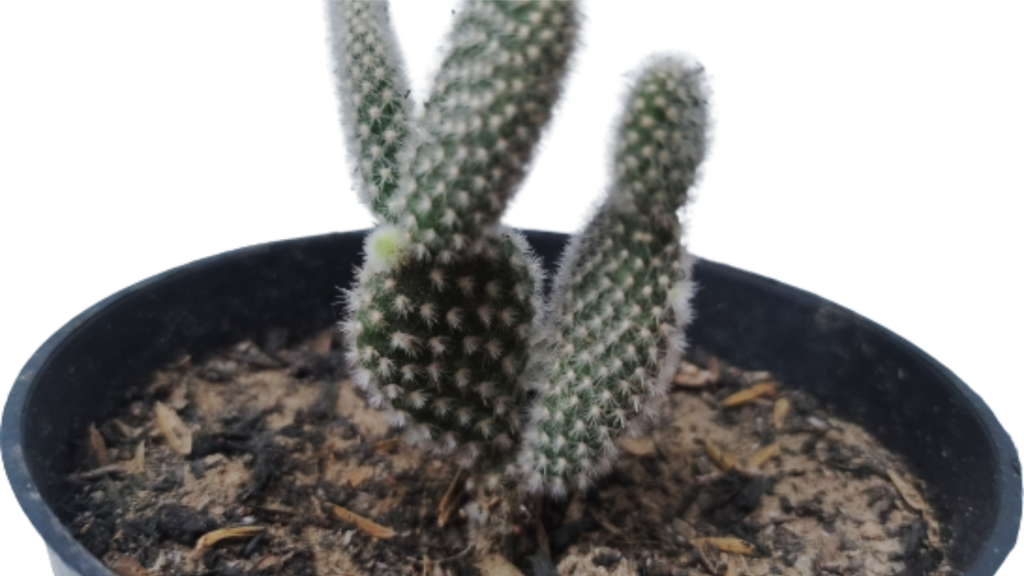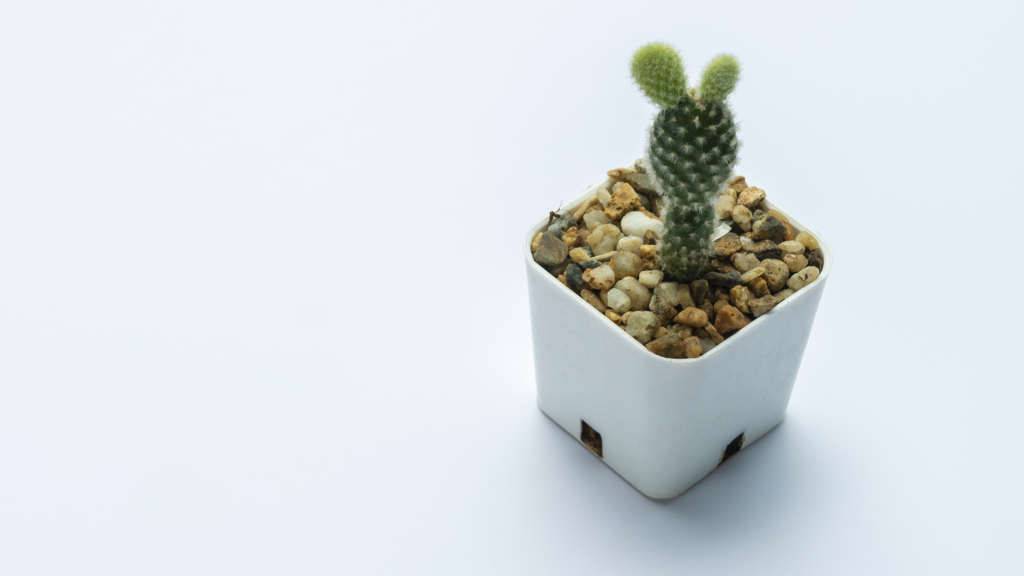Bunny Ear Cactus is a succulent that is native to the Mexican state of Coahuila. The plant grows to around 2 feet tall and has long spines that are green on the top and white on the bottom.
This cactus is named after its bunny-like ears, which are used to trap sand for water absorption. The succulent can be found in full or declined form, but the fully bloomed form is considered the most beautiful.
You may be wondering can you touch a bunny ear cactus… but it is not a good idea.
This houseplant looks like a fluffy bunny but stings like a bee. The pads of this cactus, scientifically known as Opuntia microdasys but commonly referred to as “the furry cactus,” look soft enough to stroke but are actually quite tough. Small spines called glochids are scattered all over the plant’s main body and can cause a painful itch if they penetrate your skin.
Do you have a room in your home that needs a potting soil amendment? If so, why not add some Bunny Ear Cactus to your mix?
Not only will these cacti beautify your home, but they will also help improve air quality and combat Dust mites!
The bunny ear cactus is a succulent, meaning it stores water in its leaves and can tolerate periods of drought.
These cacti are popular houseplants and are relatively easy to care for.
Table of Contents
Where Does The Bunny Ear Cactus Come From?
The bunny ear cactus, also known as the Orchid Cactus, is native to Mexico and parts of South America. It gets its name from its long, thin, curved stems that look like bunny ears.
The bunny ear cactus is a popular houseplant because it is easy to care for and can thrive indoors with bright, indirect light.
This cactus is a member of the cactus family and is related to the Christmas cactus and Easter cactus. The bunny ear cactus blooms in the spring and summer months and produces beautiful flowers in shades of pink, red, purple, or white.
If you are looking for a low-maintenance plant to add to your indoor jungle, the bunny ear cactus is a great option!
How Do You Handle A Bunny Ear Cactus?
The bunny ear cactus, also known as the Polka Dot Cactus, is a fun and easy plant to care for. These unique-looking plants are sure to add some personality to any indoor space.
Here are a few tips on how to care for your bunny ear cactus:
Light:
Bunny ear cacti enjoy bright, indirect sunlight. They will be very happy if you can provide them with a spot near a south- or west-facing window. However, be sure to protect them from direct sun, as this can cause scorching.
Water:
These cacti are pretty drought-tolerant, so you don’t need to water them very often. Allow the soil to dry out completely between watering sessions. Water deeply, but avoid getting water on the leaves, as this can lead to rot.
Fertilizer:
Fertilize your bunny ear cactus once a month during the growing season (spring and summer) with a half-strength liquid fertilizer. Be sure to stop fertilizing in the fall and winter, as this is their dormant period.
Soil:
These cacti prefer well-drained soil. A commercial potting mix formulated for cacti and succulents will work well. Be sure to repot your bunny ear cactus every year or two to refresh the soil and give them some extra room to grow.
What Are The Benefits Of Having A Bunny Ear Cactus In Your Home?
There are a few benefits of having a bunny ear cactus in your home.
- First, they are relatively easy to care for. They don’t require a lot of water and can tolerate lower light conditions, making them ideal for indoor spaces.
- Secondly, they are known to be natural air purifiers. They help remove toxins from the air, such as formaldehyde and benzene.
- Third, they are thought to bring good luck and fortune to those who have them in their homes.
- Fourth, they make for beautiful and unique decor.
Some people ask if you can eat bunny ears cactus. Prickly pears are a type of cactus with “bunny ears” and edible stems and fruits.
Salsa made with the stems of this opuntia (make sure to use a cultivar with no needles) is delicious, whether they have been grilled or eaten raw.
If you’re looking for a low-maintenance plant that can spruce up your home, a bunny ear cactus may be the perfect option for you!
Bunny Ear Cactus Problems?
The bunny ear cactus, also known as the Opuntia microdasys, is a cactus native to Mexico. It gets its name from its small, round pads resembling a bunny rabbit’s ears.
The bunny ear cactus is a popular houseplant and is known for being relatively easy to care for.
While the bunny ear cactus is not poisonous to humans, it can cause skin irritation if handled without gloves.
The sharp spines on the plant can also puncture the skin, so it’s important to be careful when handling this type of cactus.
If you have young children or pets, it’s best to keep the bunny ear cactus out of reach to avoid any accidents.

Are Bunny Ear Cactus Illegal_
According to the Biosecurity Act of 2014, bunny ears, also known as Golden bristle cactus, are a restricted invasive plant across categories 2, 3, 4, and 5. It is strictly forbidden to store, transfer, distribute, sell, or release this item into the wild. The possibility of legal repercussions
Bunny Ear Cactus Propagation
The “Bunny Ears” cactus, or Opuntia microdasys, can be grown from cuttings. As it spreads, “Bunny Ears” will create miniature plants known as offsets.
Use a clean, sharp knife to cut them off the main plant. Pads of Opuntia should be placed on top of soil that drains well.
Why is My Bunny Ear Cactus Bending
When a Bunny Ear Cactus is not receiving enough light, it may droop, bend, or stretch out due to these symptoms (also known as etiolation).
When a plant doesn’t get enough light throughout the day, it will grow toward a light source to compensate for the lack of light.
Bunny Ear Cactus Lifespan
Because of the plant’s relatively slow growth rate, it can take the Bunny-Ears Cactus anywhere from ten to twenty years to reach its full height of two to three feet.

What Are Bunny Ear Cactus Glochids
It is fascinating that bunny ears cactus never develop spines, which is one of the plant’s defining characteristics. It develops short glochids that are a white-brown color instead of spikes.
Caution is advised if you intend to handle the cactus in any way, as it may still produce venomous spines. It’s possible that the plant has two inches of (5 cm.)
Conclusion
Native to Mexico, the bunny ear cactus is a unique plant that is both entertaining and simple to care for.
Because it is very forgiving, it is an excellent option for beginners.
In addition to that, it is well known that they are effective air purifiers.
When working with the plant, it is best to wear gloves because, although the plant itself is not toxic, the sap may cause irritation.
In general, the bunny ear cactus is a wonderful addition to any house or apartment decor.
Recent Posts
Have you found yourself wondering, 'why is my bamboo growing so slow?' Despite the fact that bamboo plants are remarkably fast-growing, it can sometimes take months (or even years!) to see any signs...
Miracle-Gro is a huge help when you are trying to get decent yields out of your plants or if you want them to thrive. However, you may have noticed that a single dose of fertilizer does little to...
